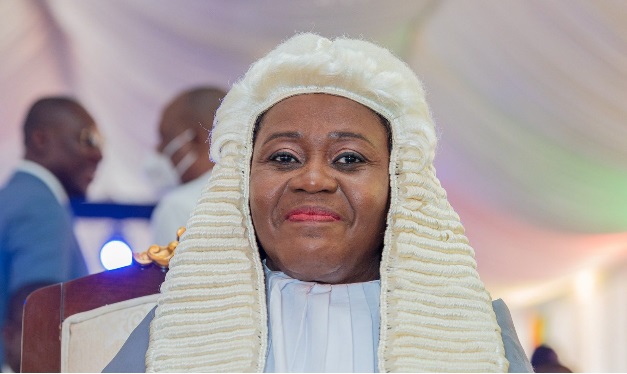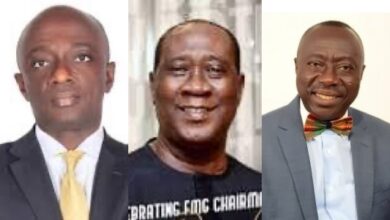Wolves in sheep’s clothing crying wolf

In 2001, when President John Agyekum Kufuor assumed office, he established the Fast Track Courts (FTCs) with the status and powers of the High Court.
Their aim was to create a judicial leg they can trust to expedite the trial of public officials from the previous Rawlings administration.
By 2002, the FTCs were handling about 63 active cases. Among these were the convictions of Mallam Issa and Victor Selormey who will unfortunately die in prison, as well as the trial of Tsatsu Tsikata, who first appeared before the court on 11th February 2002. However, Tsikata would not simply submit to what many believed was a politically motivated effort to jail ex-government officials.
He challenged the legality of the FTCs at the Supreme Court. On 28th February 2002, the Supreme Court, in a narrow 5-4 majority decision, declared the FTCs unconstitutional.
At the time, President Kufuor was attending a Commonwealth Heads of Government Meeting in Australia. Following the ruling, then Attorney General Nana Akufo-Addo, after consulting with the President, addressed the press and pledged the government’s intent to seek a reversal of the decision.
Nana Asante Bediatuo—who would later become Executive Secretary to President Akufo-Addo—told Joy FM that the ruling could cause chaos: “Here we had a situation where rulings had been given by a court that had been declared unconstitutional. It meant that cases that had been heard, properties handed over, and monies exchanged as a result of rulings by the Fast Track Court had to be reversed. That was certainly going to create chaos.”
Sam Okudzeto, who would also later serve on the Council of State under Akufo-Addo, criticized the decision, stating, “I could not see any legal basis or logic in the decision. Technically, when you talk about a Fast Track Court, it is not instituting a new court.”
The ruling drew widespread praise for Tsatsu Tsikata, who was lauded for standing up to what was seen as a political system designed to persecute him and others.
This came after a High Court had also ruled it lacked jurisdiction to hear a case brought against him, and after a failed attempt to arrest him in church.
Embarrassed by the legal setback, the Kufuor government sought every means to jail Tsikata. Upon returning from Australia, President Kufuor directed his Attorney General to suspend all legal proceedings against Tsikata until the Supreme Court ruled on the government’s application for a review of the decision.
At the time, the Supreme Court had ten justices, nine of whom sat on the case. Five ruled against the FTCs, while four upheld their legality. Seeking a review, the Kufuor administration argued that more justices were needed to fairly decide the matter.
This paved the way for new appointments to the Supreme Court. One of the appointees was Justice Kwame Afreh, who had been presiding over several cases at the now-declared unconstitutional FTCs.
His appointment generated public criticism. In response, Sam Okudzeto defended the decision, blaming the Constitution for failing to set a maximum limit on the number of Supreme Court justices: “People were thinking the number of judges in the Supreme Court was being increased to ensure the government won the review. Fact of the matter, however, is that many of the judges in the court were retiring or about to retire, so there was the need to get new ones.”
Justice Afreh was vetted and approved despite a boycott by opposition NDC Members of Parliament. Chairman of the Appointments Committee, Freddy Blay, downplayed the controversy, saying, “I saw nothing wrong with the process. The appointment of Justice Afreh to the Supreme Court was long overdue.”
Justice Afreh would later sit on the panel that overturned the initial ruling by a 6-5 majority decision.
Following this, six more justices were appointed to the Supreme Court in 2002. Tsikata’s trial resumed, and he was eventually convicted. President Kufuor later offered him a pardon, which Tsikata rejected. He eventually won an appeal against his conviction.
The period from 2001 to 2009 saw a string of orchestrated legal actions targeting NDC members. J.H. Mensah, a senior figure in the Kufuor government, infamously predicted that “by the time we get to the 2004 election, the NDC will split.”
High-profile figures, including Nana Konadu Agyeman-Rawlings, were put on trial. There was even an alleged plot to implicate former President Rawlings in a coup attempt in 2004—foiled only by the intervention of investigative journalist Raymond Archer.
When President John Evans Atta Mills assumed office in 2009, many expected him to cleanse the judiciary of NPP-era influences. But Mills, known for his restraint, chose not to engage in judicial purging.
A Former Chairman of the NDC had suggested the removal of the Chief Justice. When asked how, he said “there were many ways to kill a cat” but Prof. Mills was no cat hunter. His faith in the existing system cost his administration several embarrassing legal defeats despite the numerous corruption scandals in the Kufuor government.
President Mahama, who succeeded Mills in 2012, also avoided judicial interference. So much so that he delayed promoting Justice Sir Dennis Adjei to the Supreme Court, waiting until after the 2016 election. Mahama’s electoral loss meant the promotion never materialized.
Adjei was subsequently sidelined under the Akufo-Addo administration as he was seen as a Mahama loyalist. His competence and scholarship didn’t matter at all. And that was the tip of Akufo-Addo’s iceberg.
Under President Akufo-Addo, there has been a drastic manipulation of the judiciary. Of the 14 current Supreme Court judges, 12 were appointed by him. In September 2024 alone, he swore in 21 new High Court judges.
Justice Baffoe-Bonnie, who is currently acting as Chief Justice, has reportedly faced intimidation and exclusion due to his ruling in favour of Mahama during the 2012 election petition. Meanwhile he was promoted to the Supreme Court by President Kufuor. He was not ‘NDC appointee’ but Akufo-Addo couldn’t stand him.
According to lawyer Martin Kpebu—whose allegations remain uncontested—President Akufo-Addo personally pressured Justice Baffoe-Bonnie to resign.
When he refused, his wife, a senior officer in the Ghana Prisons Service, was allegedly denied promotion in retaliation. She now serves as Director of Prisons. Justice Baffoe Bonnie himself was hardly empaneled to hear any case because they could not trust him to do their bidding.
As for the legal manipulations, match fixing and questionable rulings under Akufo-Addo’s watch, the record speaks for itself.
What is clear is this: the NPP has a consistent history of manipulating the judiciary to serve its political ends—from the Kufuor administration to Akufo-Addo’s.
Having presided over what many consider the most corrupt government in the Fourth Republic, the judiciary—now heavily stacked with pro-NPP judges—was their final hope to escape accountability, just as they did in 2009.
Unfortunately for them, the current Chief Justice put in place to protect them from accountability has not conducted herself with honour.
There is legal justification for her removal, and she must be held accountable to the very laws she swore to uphold. President Mahama has not breached any process.
The NPP is shouting from all angles condemning any and everything but surprisingly shying away from discussing the content of the petitions which they are very much privy to because they know her position is untenable with the nature of allegations leveled against her.
As I have established in this article, the NPP who are crying wolf today have always been the wolves devouring our democracy except that they appear in sheep clothes.
They pretend to be lovers of the rule of law when they are not in power but forget the rule of law when they are in power. In this case, fortunately, the rule of law has been upheld to the core by President Mahama.
Written by;




